1. Properties
1.1. Group of organic compounds with a oily greasy or waxy consistency
1.2. Insoluble
1.3. Water repelling
2. Free Fatty Acids
3. Monglyserids
3.1. 1 monoacylglycerol
3.1.1. Depending on esterbond
3.2. 2 monoacylglycerol
3.3. Are formed by release of a fatty acid from diacylglycerol
3.4. E 471- Mono and diglycerides of fatty acids
4. Diglyserids
4.1. Glyceride consisting of two fatty acid chains
4.2. E 471- Mono and diglycerides of fatty acids
5. Fat Digestion
5.1. Digestion of fat begins in the mouth where lingual lipase breaks down the short chain lipids in to diglycerides
5.2. Fats are mainly broken down in the small intestine , when fat is presented there the intestines produce hormone that stimulate the release of pancreatic lipase from the pancreas and ( bile acid from the liver
5.3. That helps in the emuslification of fats for the absorbtion of fatty acids . Complete digestion of a molicule of fat ( a triglyceride) results in 3 fatty acid molicules and one glycerol molicule.
6. Digestion of Triglyceride
6.1. Three carbon atoms in the triglyceride are named sn1,sn2,sn3
6.2. Specific lipase and other lipase hydrolize the fatty acids in positon 1 and 3
6.3. fatty acid in position no 2 is a Monoglycerol and the body absorbs it like that.
7. Lipids
7.1. Fatty acids
7.2. Glycerolipids
7.3. Phospholipids
7.4. Sphingolipids
7.5. Saccharolipids
7.6. Polyketides
7.7. Sterols
7.8. Prenol
8. Types
8.1. Saturated and unsaturated fatty acids
8.1.1. Saturated
8.1.1.1. Contain max no of H atoms
8.1.1.1.1. SFA
8.1.2. Unsaturated
8.1.2.1. Contain some C- atomsthat are double bonded with each other and not fully saturated with H atoms
8.1.2.1.1. MUFA
8.1.2.1.2. PUFA
8.2. How do fatty acid differ
8.2.1. in the degree of saturation
8.2.1.1. carbon forms 4 bonds
8.2.1.2. if it uses up one bond to form a double bond , that is one less bond it can make to a hydrogen
8.2.2. Length of carbon atoms
8.3. Neutral oils and fats
8.3.1. Tryglycerides
8.3.1.1. Is a singlular molicule of fat.
8.3.1.2. Made from Glycerol and any three fatty acids
8.3.2. Oils (liquid)
8.4. Phospholipids
8.4.1. Consist of organic group, phosphate group, glycerol and fatty acid
8.4.2. Hydrophilic head and hydrophobic tail (polar molicules) form a lipid bilayer- plasma membrane
8.4.3. 2 fatty acids + Phosphate molecule attached to Glycerol
8.4.4. Phosphate soluable in water -
8.4.5. Fatty acid Insoluble in water
8.4.5.1. Therefore is a gram of fat one gram
8.4.5.2. Carbohydrate gram can hold 2 gram of water
9. Soapable
9.1. Triglycerides
9.2. Phorfolipids
9.3. Glycolipids
9.4. Vaxes
10. Not soapable
10.1. Squaleln
10.2. Kolesterol
10.3. Steroid hormones
10.4. Gallsalts
10.5. Karotenoids
10.6. Fat soluable vitamins
11. Orka
11.1. Fat 9 kcal/g 39 Kj/kg
11.2. Protein 5,5 kcal/g 24 Kj/kg
11.3. Karbohydrat 4 kcal/g 17 Kj/kg
12. Fat inhold i fisk
12.1. Cod, haddock, ling , tusk, saithe
12.1.1. 0,8% í fillet
12.1.1.1. 87% phosfolipids
12.1.1.2. 1,6% tryglyserids
12.1.1.3. 9,7% kolesterol
12.1.2. up to 70% in liver
12.2. Redfish, Salmon, Silversmelt , halibut
12.2.1. from 3-7 %
12.3. Herring , mackerel, greenland halibut
12.3.1. Fat fishes up to 30% fat
12.3.1.1. about 24% phosfolipids
12.3.1.2. about 71% triglyserids
12.3.1.3. 4,6% kolesterol
